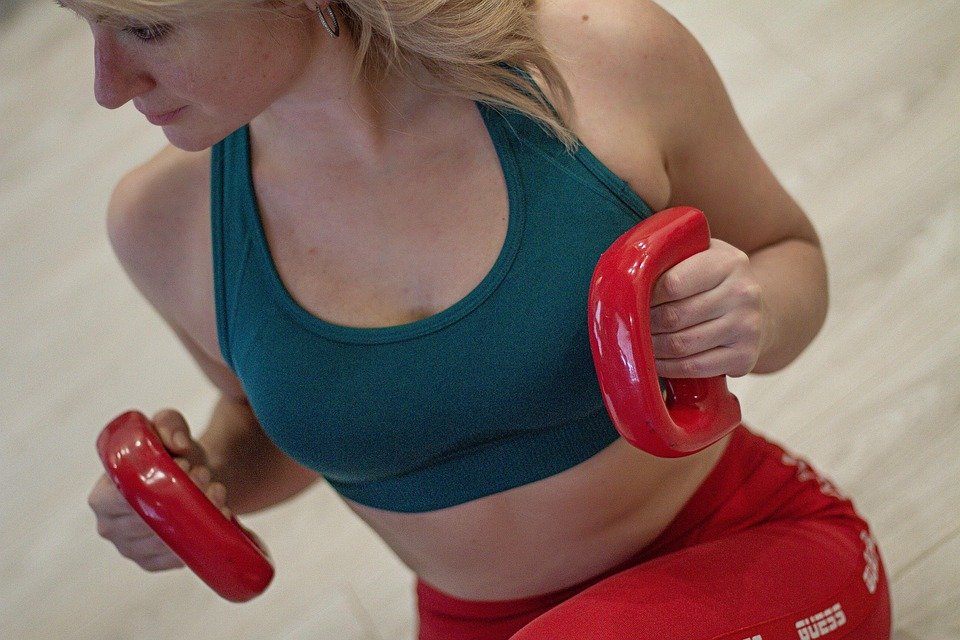While Joe Weider created an American bodybuilding institution with the advent of the Mr. Olympia competition back in 1965, the pop-culture phenomenon has continued to grow under the leadership of current owner Jake Wood, who is helping to connect the Olympia event with its larger than life athletes, passionate partner brands, and an expanding number of fitness fanatics who travel internationally to be a part of this sweat inducing spectacle.
The Olympia event has always prided itself on being inclusive, focusing only on the flexing while ignoring limitations like borders and politics. Since New Yorker, Larry Scott first won the Mr. Olympia trophy during the inaugural show in 1965, seven other countries have produced Mr. Olympia title holders, famously including Austria’s Arnold Schwarzenegger and celebrated champions hailing from Cuba to Iran.
The Olympia Weekend has Evolved Alongside Technology
But in those early days of the Olympia, with no television coverage to reach the masses with, attendees of the competition mainly comprised of the bodybuilders, their coaches and families, and those fans who were local to the event. Then, when the show did eventually make it on to domestic TV screens, foreign bodybuilding fans still had to find creative ways of seeing those stars that they’d only read about in glossy magazines like Muscle & Fitness, compete. While the ’80s did see Olympia events take place in countries such as Germany, England, and Australia, the competition has been based in the United States from the ’90s onward, meaning that fans had to figure out how to watch the best physiques in the business vie for the title of Mr Olympia.
“The DVDs were such a big thing,” explains Robert Scafidi, a 41-year-old bodybuilding enthusiast from Melbourne, Australia, who is now a regular Olympia vacationist and follows the event to each chosen U.S. host city. “People used to trade DVDs at your local gym,” he recalls. “Before YouTube and Instagram, DVDs were what people traded, and you couldn’t get enough of it.”
Back in the ’90s, with a growing fan base, Olympia organizers wanted to connect the bodybuilding stars with their supporters, and humble meet and greet style events soon followed in ballrooms close to the main competition stage. Fast-forward to 2025, and these engagement events have exploded into expos, to the point that thousands of fans from all over the world gather for the annual Olympia Fitness & Performance Weekend. Indeed, Olympia is no longer simply about crowning a new bodybuilding champion. The long weekend is a not-to-be-missed chance for fans, aspiring bodybuilding stars, current influencers, and major brands to get together in the name of fitness.
Bodybuilding enthusiast and competitor, Louis Howell, 23, from Northamptonshire, England, made his first pilgrimage to Olympia in 2024 for the 60th edition, and it was an extra special experience for him, because England’s Samson Dauda won the title that same year. Howell had such a great trip to the ‘O’ that he returned in 2025, this time with his friend and fellow bodybuilder; 28-year-old Brandon Fairbrother from Lincolnshire, England. And so, this year, the two pals were able to make an unforgettable vacation out of the event held once again in Las Vegas. DVD’s may be out, but now it’s social media that provides the driving force for future fans.
“In lockdown, I actually saw Chris Bumstead come up on TikTok and I was like, ‘That’s what I want to do with my life,’” shares Louis Howell, who has become a disciplined athlete in his own right. “And then from there on, that’s all I’ve ever done and that’s all I’m ever going to do.”
While bodybuilding is often thought of as a shallow enterprise, the truth is far, far deeper. “Health wise, mentally, it’s been fantastic,” says Brandon Fairbrother. “Bodybuilding has saved me from going down a path.” The positive journey that Fairbrother speaks of, choosing to live his best life and shun negative lifestyle habits thanks to a love of working out, is a story you’ll hear countless times during any Olympia weekend, no matter the host location.
The Olympia Expo is Great For Fans, and a Goldmine for Partner Brands
With the Olympia expo becoming a mecca for muscle builders and fitness enthusiasts to head to, from every corner of the world, the smarter brands have been quick to capitalize on the attractive demographics that flock to buy entry tickets. In 2025, Gymshark, a British company that began on a small scale, selling gym apparel, but now has a global presence, and is headed toward a $1 billion annual turnover , became an official sponsor of the Olympia, and this year has given fans a chance to rub boulder-shoulders with stars like the aforementioned six-time Classic Physique champion, Chris Bumstead and social-media-star-turned-IFBB-pro, Sam Sulek. Other exhibitors at the expo in 2025 included Linear Bar, a protein treat that contains zero sucralose and includes all organic ingredients. Then there’s Red Bull, and UFC Gym, where the crew put its visitors through their paces with fun fitness challenges; like how long you can curl a set of 35-pound dumbbells without reaching failure? These brands, and hundreds of others, reached over 60,000 people from more than 70 counties at the Olympia expo, but they didn’t just sell a faceless product, they helped bring together the fitness community too.
Olympia Weekend Has Become an Unrivaled Vacation Destination
Blessing Awodibu is a two-time Arnold Classic winner who lives in Ireland and was born in Nigeria. To his fans, he’s known as “The Boogie Man,” but he’s really a gentle giant who loves to interact with the culture. “There’s absolutely thousands of people here,” he tells M&F during an appearance at the Las Vegas Convention Center, representing MuscleTech. “This is why I love fitness, man. This is why I love bodybuilding. You get a lot of support from online, social media, Instagram, YouTube, (but) it’s actually real nice to actually meet these guys, shake hands, talk, connect with them. So, it’s special. It doesn’t get better than this.”
The challenge for making the Olympia better, with each passing year, lies with its mantle bearer, Jake Wood, who was a competitive bodybuilder himself, and is intent on upholding Joe Weider’s enduring legacy, while bringing Olympia to new heights. To that end, in 2025, Wood gave the green light for a record-breaking prize purse for competitors that totaled $2 million. This year’s Mr Olympia, Derek Lunsford, won a whopping $600,000 for his on-stage performance at the Resorts World Theater. But despite the enormity of the athletes, the fitness culture can often seem like a small world at times, and that’s another attractive prospect for fans who want to meet their heroes.
“Oksana Grishina, who’s a multiple-time Fitness Olympia champion, was just sitting next to me and recognized me from shows in Australia and also from here,” beams our Aussie fan, Robert Scafidi. “It’s a community and camaraderie amongst like-minded individuals,” he explains. Of course, this is a sentiment strongly shared by the British lads as well. “It’s probably the best holiday we’ve ever had,” says Brandon Fairbrother. “Oh, that’s definitely not going to be my last Olympia,” concurs Louis Howell.
For further information on attending the Joe Weider’s Olympia Fitness & Performance Weekend, visit
This post is brought to you by: Source link
How Olympia Became An International Vacation Destination, 2025-10-17 11:19:00
















